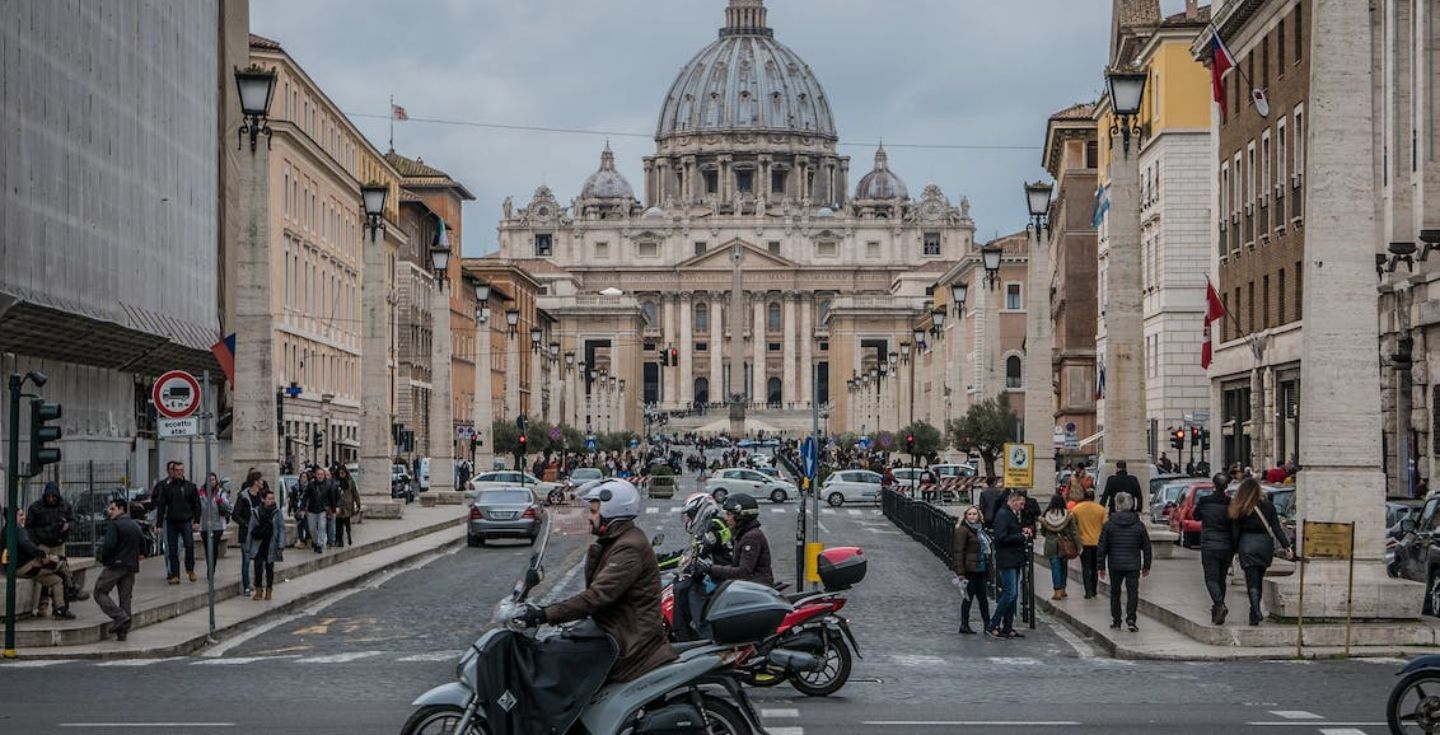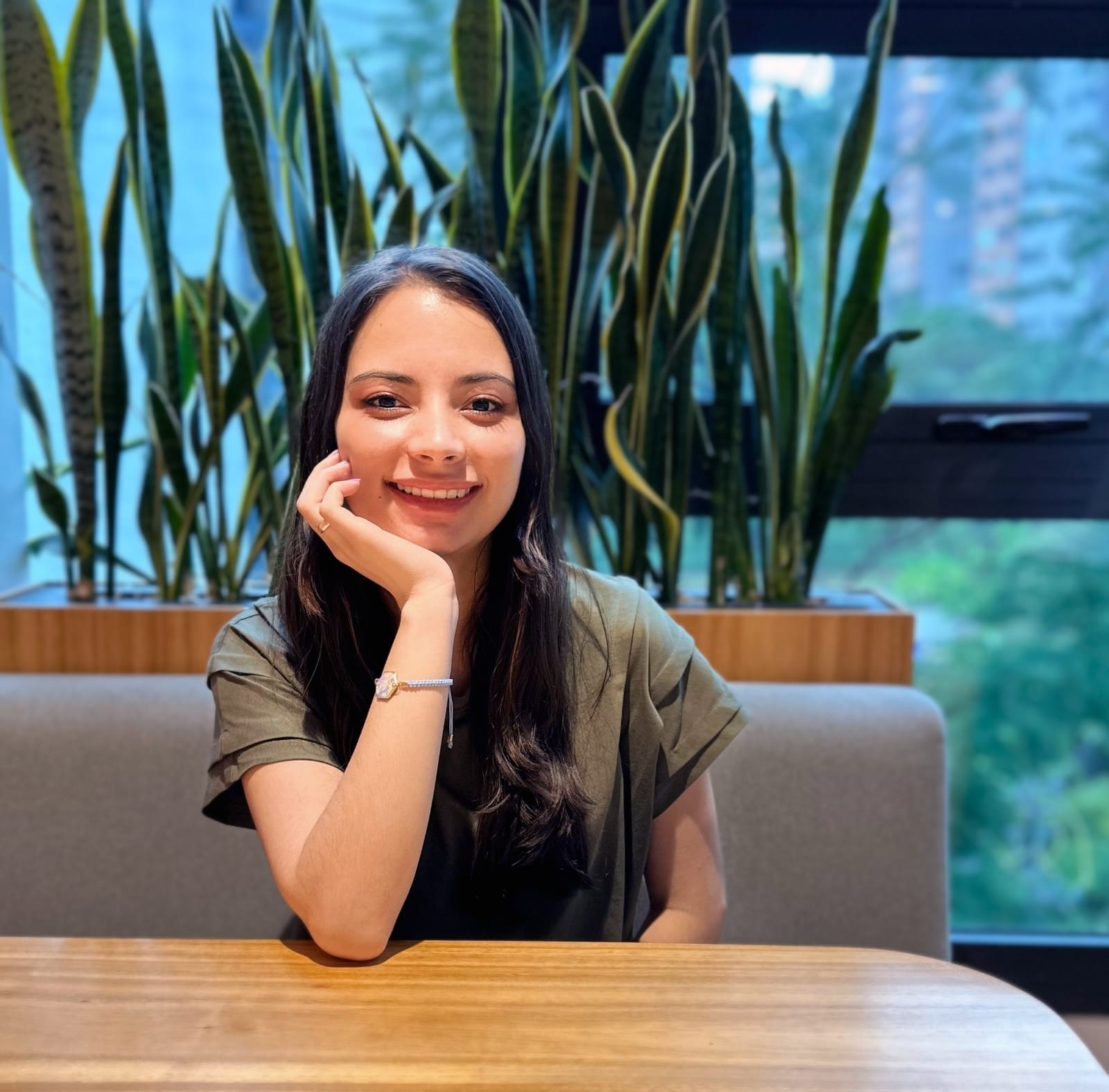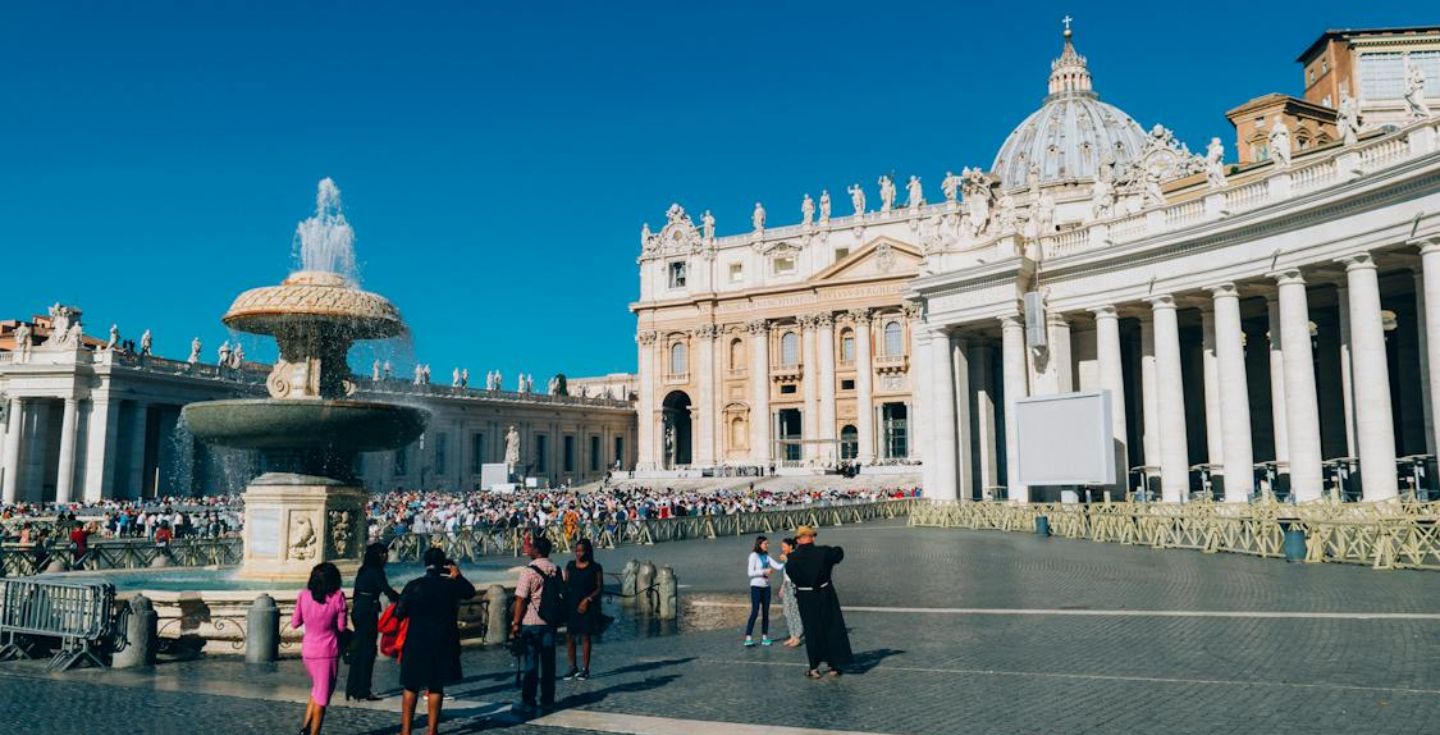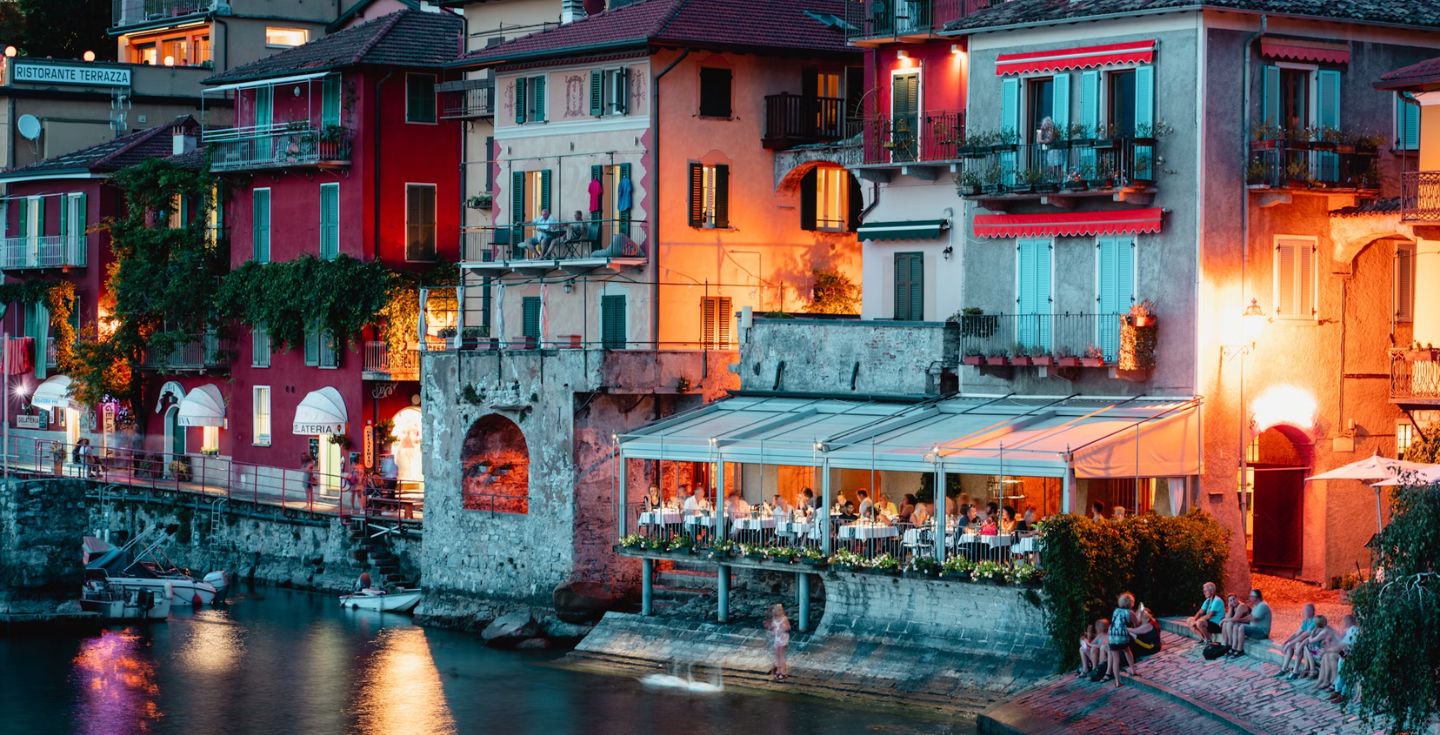Travel guide to Italy: Everything you need to know
Explore Italy with no issues with our comprehensive travel guide. Get all the information you need, including how to connect abroad!
Feel like going to Italy? Everyone, from history buffs to foodies, can find something they enjoy in this beautiful country. Everything from the best sights to see to the most fun things to do and eat to the best souvenirs to bring back home, you’ll find it all in our Italy travel guide.
There is something for everyone in Italy, whether they are interested in art, history, or just want to try some delicious Mediterranean food. The time to begin organizing your trip to Italy is now. Continue reading our travel guide!
What you should know about Italy: General info
You should know these things before you begin making plans for your trip to Italy:
- Climate: Guide yourself through the climate of Italy as it changes from region to region and from season to season while you travel. Check area averages before packing; temperatures can range from below freezing in the Alps to well above 100 degrees in Sicily in the summer.
- Language: While Italian is the national language, other languages, including German, Slovene, and French, are recognized in specific areas.
- Currency: Euro (EUR).
- Time Zone: For most of the year, Italy observes Central European Time (CET), which is UTC+1, and daylight saving time (CEST), which is UTC+2.
If you want to get the most out of your money, rather than using a bank or a hotel to make a currency exchange, utilize an official exchange house. Always get a receipt when exchanging currencies and shop around for the best exchange rate. It’s possible to make a currency exchange at the airport if time is of the essence, but you should be aware of the large commissions and less favorable rates.
Italy Travel Tips: What to Keep in Mind
Be well-prepared for your trip to Italy with this travel guide by checking off all the boxes in terms of paperwork, staying connected, adapting to local customs, and staying safe. Here are some things to think about:
Visa
A valid passport for at least six months beyond your planned departure date is required for entry into Italy. It is possible that you will need a visa to enter Italy or the rest of the Schengen area (European Union), depending on where you are from. If you need a visa to enter Italy, contact the Italian consulate or embassy in your country. To enter the Schengen area, citizens of certain countries may need to apply for ETIAS permission. Check the table below about the countries that require a visa to enter Italy. Keep this on your checklist and travel guide for Italy.
| Countries | ||
|---|---|---|
| Afghanistan | Algeria | Angola |
| Saudi Arabia | Armenia | Palestinian Authority |
| Azerbaijan | Bahrain | Bangladesh |
| Belize | Benin | Bhutan |
| Belarus | Bolivia | Botswana |
| Burkina Faso | Burundi | Cambodia |
| Cameroon | Cape Verde | Central African Republic |
| Chad | China | Comoros |
| Congo | Congo (Democratic Republic) | North Korea |
| Ivory Coast | Cuba | Dominican Republic (Republic) |
| Ecuador | Egypt | Eritrea |
| Ethiopia | Eswatini (formerly Swaziland) | Fiji |
| Philippines | Gabon | Gambia |
| Ghana | Jamaica | Djibouti |
| Jordan | Guinea | Guinea Bissau |
| Equatorial Guinea | Guyana | Haiti |
| India | Indonesia | Iran |
| Iraq | Kazakhstan | Kenya |
| Kyrgyzstan | Kosovo | Kuwait |
| Laos | Lesotho | Lebanon |
| Liberia | Libya | Madagascar |
| Malawi | Maldives | Mali |
| Morocco | Mauritania | Myanmar |
| Mongolia | Mozambique | Namibia |
| Nepal | Niger | Nigeria |
| Oman | Pakistan | Papua New Guinea |
| Qatar | Rwanda | Russia |
| São Tomé and Príncipe | Senegal | Sierra Leone |
| Syria | Somalia | Sri Lanka |
| South Africa | Sudan | Suriname |
| Tajikistan | Tanzania | Thailand |
| Togo | Tunisia | Turkey |
| Turkmenistan | Uganda | Uzbekistan |
| Vietnam | Yemen | Zambia |
| Zimbabwe |
Security
Before leaving on your trip, you should definitely get international travel insurance. In the event of unforeseen difficulties, this safety net will be there to catch you. When traveling through Italian cities, keep in mind that train stations, airports, popular tourist destinations, and crowded markets are all sites where pickpockets operate, so it’s important to be extra careful with your valuables.
When traveling in major cities, it’s recommended to avoid carrying significant amounts of cash and instead rely on credit cards or debit cards. You should also consume alcohol sparingly, as doing so can increase your risk of being the victim of theft or assault.
Culture
The Italian way of life is rich in culinary delights, artistic mastery, and historical significance. Opera and modern pop are just two examples of the wide range of music that has made the country famous. Pasta, pizza, risotto, and gelato are merely a few of the delicious dishes you must try to truly understand Italian culture. Visit the local market, go for a stroll through the beautiful highlands, or unwind on the beautiful beaches.
Access to the Internet
It is crucial that you maintain your internet connection while in Italy, it may be your digital guide while you travel. It’s a great way to update your social media followers on your adventures. Getting an eSIM from Holafly is one option for getting online in Italy.
The only thing you need is an eSIM-compatible phone, and in case you don’t you can always get a local Italy SIM card, a Pocket WiFi or even roam with your data provider.
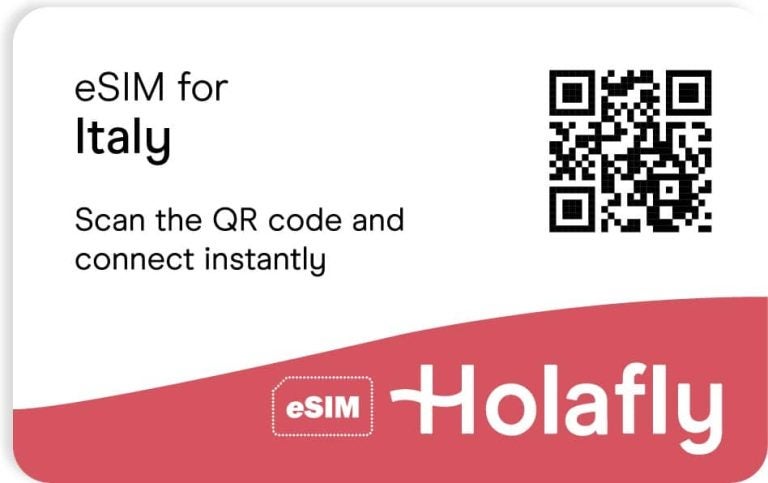
What Season Is Best to Visit Italy?
March–May and September–October are the ideal months to visit Italy. Italy’s spring temperatures of 10°C (50°F) to 20°C (68°F) are ideal for outdoor sports and exploration. Fewer people than in summer makes it more peaceful. Autumn is warm, with temperatures between 15°C (59°F) to 25°C (77°F). Due to the harvest season, it’s great for outdoor activities and wine tasting. Here’s a suggested guide on times to visit Italy to participate in local customs while you travel:
- Carnevale (February): Characterized by spectacular masks, costumes, and parades. It’s a lively and interesting festival right before Lent begins.
- Easter (April): A major Catholic event marked with processions and celebrations in several locations around the country on Easter Sunday. The mass held on Easter Sunday at St. Peter’s Basilica in Rome is especially well-known.
- Infiorata (May and June): The streets of Noto, Sicily, become elaborate floral carpets during the annual Infiorata Festival. It’s an incredible manifestation of imagination and talent.
- Palio di Siena (July and August): The Palio is an exciting horse race that has been held in Siena, Tuscany, for generations. This event is a must-see for fans of intense competition.
- Ferragosto (August): Celebrated on the 15th of August, is the pinnacle of Italy’s summer vacation season. There are many celebrations and fireworks shows held all around Italy, and many people take time off work to enjoy them.
- The Venice Film Festival (August and September): The worldwide filmmakers and personalities who attend one of the most prominent film festivals in the world make Venice a dazzling event.
- La Notte Bianca (September): Several Italian cities, such as Rome and Florence, organize all-night cultural activities and performances.
- Festivals (October and November): Various areas, including Piedmont and Umbria, host festivals dedicated to the celebrated culinary delicacy of truffles.
Which is the most convenient month to visit Italy?
Next in this travel guide, the months of May and September are the most pleasant for visiting Italy. May is a great month to visit because of the mild temperatures, flowering landscapes, and lack of crowds associated with the start of summer, but this can increase the cost of your trip to Italy.
September also has warm temperatures, fewer tourists, and the harvest season in wine regions, making it ideal for people looking for a relaxing vacation with a focus on food.
Catch the Infiorata Flower Festival in Noto, Sicily, is one of several events and celebrations that may be enjoyed in Italy during the month of May, so remember to write this down in your travel guide notes. Many regions of Italy host wine festivals and other harvest-related activities in September, making it an ideal for all you wine lovers out there.
How to get to Italy?
Traveling to Italy by plane
- The fastest and most convenient way to get to Italy is by air. Italy has a number of major international airports, the largest of which are Rome’s Fiumicino Airport and Milan’s Malpensa Airport. There are direct flights to several cities in Italy from many different airports. Some highly recommended air carriers across the globe are as follows:
- To get to Italy from the United States and Canada, you can fly with American Airlines, Delta Airlines, United Airlines, Air Canada, or Air Transat.
Direct flights to Italy are available from many European cities, making it a practical choice for European tourists. Connectivity is excellent because of low-cost airlines like as Alitalia, Ryanair, and EasyJet.
Direct or connected flights to Italy can be found from Latin America on LATAM, Copa Airlines, and Avianca.
While nonstop flights from Asia to Italy are rarer, carriers such as Qatar Airways, Turkish Airlines, and Korean Air offer connecting flights.
Use a flight search engine like Skyscanner to locate the best available fare for your desired trip dates, passenger count, and budget. You should also consider an alternative to have internet while traveling, the eSIM for Milan is an excellent option when traveling to the city. And if your trip includes other destinations in Europe, opting for an EU eSIM will keep you connected across borders without switching SIMs.
Getting to Italy by land
- One important aspect that we want to include in this travel guide is that Italy is home to a well-developed and reliable public transportation system that makes traveling throughout the country a breeze. Here are some possible modes of transportation: Italy has an extensive train network that links the country’s major cities and communities. Both Trenitalia and Italo serve as the main train companies in Italy.
Buses are a practical alternative to trains for getting to far-flung locations. Buses are readily available from companies like FlixBus.
The metro systems in major cities like Rome, Milan, and Naples make getting around the city quickly and easily.
- Taxis: Taxis are a convenient and comfortable mode of transit in most Italian cities, but they are also more expensive than other modes of public transportation.
Rental Cars: Consider getting a rental automobile if you value independence. However, in major cities, traffic can be particularly frustrating. The Roma Pass in Rome and the Firenze Card in Florence are two examples of city-specific tourist cards that can be useful if you plan to do a lot of travel across Italy, very important in this guide. These cards offer savings on transportation costs and admission to well-known landmarks and museums.
How to get to Italy by Sea
Tourists have several options for reaching Italy by sea, making it a versatile and scenic mode of travel, sometimes even a guide is important. Italy has a comprehensive ferry network that connects it to neighboring countries such as Greece, Croatia, Tunisia, and Spain. These ferries operate on various routes, with popular ones including Athens to Bari, Barcelona to Genoa, and Dubrovnik to Ancona.
Cruises are another popular way to reach Italy by sea, as many cruise lines offer itineraries that include stops in Italian ports like Venice, Rome (Civitavecchia), and Naples. This allows tourists to explore multiple Italian destinations in one trip while enjoying the amenities of a cruise ship.
For those traveling with vehicles, car ferries are available, allowing you to bring your car into Italy. Additionally, private yachts and sailboats can sail to Italian ports and marinas along the coast. Italy also offers excellent opportunities for island hopping, with regular ferry services between the mainland and its beautiful islands like Sicily, Sardinia, and the Aeolian Islands.
Travelers should plan their sea journey in advance, considering ferry schedules, booking options, and any visa or entry requirements for Italy.

Savoring Italian Cuisine
Discovering the delicious variety of Italian cuisine in the country’s major cities is an unforgettable experience. Carbonara, cacio e pepe, and suppli (rice croquettes) are just a few of the traditional Roman meals you can enjoy at the city’s many restaurants. Don’t pass up the chance to eat real Roman pizza, which is well-known for its thin and crispy crust.
Traditional Roman cuisine can be sampled at the many trattorias and osterias that dot the city’s cobblestone streets. Gelato from one of Rome’s many world-famous gelaterias is another must-have during any trip to the Eternal City.
Tuscany’s culinary hub is Florence, where you can feast on authentic regional fare. Try some pappa al pomodoro (tomato and bread soup), a Florentine steak, or ribollita (a robust vegetable soup). The Mercato Centrale and other markets in Florence are great places to try the region’s famous cheeses, cured meats, and fresh produce.
Chianti and Brunello di Montalcino are two of the city’s most famous wines, so try them with your meals. Cantucci (almond biscuits) dipped in Vin Santo (Tuscan dessert wine) make for a delicious after-meal treat.
You can discover some of the best pizza in the world in Naples, the city where pizza was first created. A thin, delicate crust is the hallmark of a classic Neapolitan pizza, which is topped with just the freshest, most basic ingredients like San Marzano tomatoes and buffalo mozzarella.
Look for a pizzeria that has signed on to the Associazione Verace Pizza Napoletana’s code of conduct. Street foods like fried pizza, sfogliatella (ricotta-filled pastries), and arancini (rice balls) have made Naples renowned. Seafood delicacies like spaghetti alle vongole (clams) and frittura di paranza (mixed fried seafood) are part of the city’s thriving cuisine.
Top 10 cities to visit in Italy:
- Rome: Explore the iconic Colosseum and immerse yourself in history at the Roman Forum, then marvel at the grandeur of Vatican City’s St. Peter’s Basilica and the Sistine Chapel.
- Florence: Admire the breathtaking Florence Cathedral, delve into art at the Uffizi Gallery, and savor Tuscan cuisine in this artistic gem.
- Venice: Stroll through St. Mark’s Square, glide along the canals in a gondola, and visit the historic Doge’s Palace in the enchanting city of Venice.
- Milan: Witness the magnificence of Milan Cathedral, discover Renaissance art at the Brera Gallery, and indulge in world-class shopping at Galleria Vittorio Emanuele II.
- Naples: Unearth ancient history at Pompeii and Herculaneum, and savor Neapolitan pizza in the vibrant city of Naples.
- Bologna: Climb the Two Towers, admire the grandeur of Bologna Cathedral, and savor authentic Italian cuisine in this culinary capital.
- Verona: Experience the grandeur of the Arena di Verona, visit Juliet’s House, and soak in the romantic atmosphere of this charming city.
- Sicily (Palermo, Catania, Taormina): Explore the stunning Palermo Cathedral, witness Mount Etna’s majesty, and relax on Taormina’s beautiful beaches.
- Turin: Marvel at the Turin Cathedral and the Shroud of Turin, delve into ancient history at the Egyptian Museum, and enjoy the city’s cultural treasures.
- Sicily (Palermo, Catania, Taormina): Discover the beauty of Monreale Cathedral, explore the wonders of Siracusa’s Archaeological Park, and relax on Cefalù’s picturesque beach.
Italys Top 10 Beaches
Discover the best top 10 best beaches in Italy:
- Spiaggia dei Conigli (Rabbit Beach), Lampedusa: Crystal-clear waters and marine life make it ideal for snorkeling.
- Spiaggia dei Due Mari in Sardinia is a tranquil haven with two magnificent bays connected by a thin strip of land.
- Spiaggia di Tropea, in Calabria, is well-known for its gentle sand and crystal-clear waters.
- Cala Goloritzé, Sardinia: A hidden gem accessible by boat or hike, featuring a natural arch and pristine waters.
- Fetovaia Beach, Elba: A picturesque bay with golden sand and great swimming conditions.
- Cala Mariolu, Sardinia: Famous for its colorful underwater world, perfect for diving.
- San Vito Lo Capo, Sicily: A long, sandy beach with clear waters and a charming town nearby.
- Cala Rossa, Favignana: Known for its red rocks and transparent waters, perfect for snorkeling.
- Baia delle Zagare, Puglia: A secluded cove with sea caves and crystal-clear waters.
- Spiaggia di Sansone, Elba: A small, enchanting beach with white pebbles and excellent snorkeling opportunities.
Top cultural tourism destinations in Italy
Italy is a treasure trove of cultural destinations. Immerse yourself in the top cultural tourism destinations in the country:
- Rome: Explore the heart of the Roman Empire with iconic sites like the Colosseum, the Roman Forum, and the Vatican Museums, home to the Sistine Chapel’s masterpiece.
- Florence: The birthplace of the Renaissance, Florence boasts treasures like the Uffizi Gallery, Florence Cathedral, and the stunning Ponte Vecchio bridge.
- Venice: Known for its unique architecture, Venice offers attractions such as St. Mark’s Basilica, the Doge’s Palace, and scenic gondola rides.
- Pompeii: Step back in time at the ancient city of Pompeii, preserved by the eruption of Mount Vesuvius in 79 AD.
- Milan: A hub of fashion and culture, Milan is home to renowned sites like Milan Cathedral, Leonardo da Vinci’s Last Supper, and the La Scala Opera House.
- Naples: Explore Naples’ historic center, a UNESCO World Heritage Site, and visit the Naples National Archaeological Museum.
- Siena: Famous for its medieval streets and the Palio horse race, Siena features the stunning Siena Cathedral and Piazza del Campo.
- Venice: The captivating city of Venice, known for its canals, offers iconic attractions like St. Mark’s Square and the Rialto Bridge.
- Verona: Immerse yourself in romantic Verona, the setting of Shakespeare’s “Romeo and Juliet,” and visit the Arena di Verona and Juliet’s House.
- Palermo, Sicily: Explore the rich history of Palermo with its Norman Palace, Palermo Cathedral, and the vibrant street markets.
Where to experience ecotourism in Italy?
Italy offers several hotspots for ecotourism, allowing vacationers to immerse themselves in the country’s stunning natural landscapes while promoting sustainable and responsible travel. Dive our ecotourism guide when your travel to Italy:
- Gran Paradiso National Park, Piedmont and Aosta Valley: Italy’s oldest national park is a haven for wildlife enthusiasts and hikers. It offers a chance to spot ibex, chamois, and golden eagles.
- Cinque Terre, Liguria: This UNESCO World Heritage Site features a network of hiking trails that wind through picturesque coastal villages, vineyards, and olive groves.
- Dolomites, South Tyrol and Trentino: Explore the rugged beauty of the Dolomites through activities like hiking, mountain biking, and wildlife watching.
- Abruzzo National Park, Abruzzo: Known for its diverse flora and fauna, this park is ideal for wildlife enthusiasts and offers opportunities for trekking and birdwatching.
- Val Grande National Park, Piedmont: Italy’s largest wilderness area provides an off-the-beaten-path experience with challenging hiking and the chance to see untouched nature.
- Majella National Park, Abruzzo: This park boasts a variety of landscapes, from high peaks to deep canyons, and offers hiking, wildlife watching, and opportunities to discover rare plant species.
- Sardinia’s Gennargentu National Park, Sardinia: Explore the island’s rugged interior, hike to remote villages, and spot Sardinian deer and wild boar.
- Etna Park, Sicily: Discover the unique ecosystem around Mount Etna through guided treks and explore lava fields, craters, and vineyards.
- Val Grande, Piedmont: One of the wildest areas in the Alps, Val Grande offers challenging hiking routes through pristine wilderness.
- Tuscany’s Maremma Regional Park, Tuscany: This coastal park provides opportunities for birdwatching, hiking, and exploring the Tuscan countryside.
Touring Italy: Transportation options
Italy offers various transportation options to explore the country. Here are some convenient ways to get around Italy:
- Trains: Italy has an extensive and efficient train network connecting major cities and towns. Trenitalia is the primary train operator, offering high-speed trains like the Frecciarossa and regional trains. It’s a great way to travel between cities, offering comfort and scenic views.
- Buses: Buses, operated by companies like FlixBus and SITA, are an economical choice for traveling to smaller towns. Also, it’s great to go to rural areas that aren’t well served by trains. They offer a cost-effective means of transportation.
- Rental Cars: If you want flexibility and plan to explore rural regions, renting a car is an excellent option. Italy has a well-maintained road network, and driving can be an enjoyable way to see the countryside. However, be prepared for traffic congestion in major cities.
- Metro and Trams: Major cities like Rome, Milan, and Naples have efficient metro and tram networks for navigating urban areas. They are convenient for exploring city centers and reaching popular attractions.
- Taxis: Taxis are available in cities and can be a convenient way to get around, especially for short trips. Additionally, it is also useful when public transportation is limited.
- Ferries: If you plan to visit Italy’s islands like Sicily, Sardinia, or the Amalfi Coast, ferries are a common mode of transportation. They offer scenic views of the coastline and the Mediterranean.
- Cycling: Italy is a bike-friendly country with many scenic cycling routes. You can rent bicycles in cities and explore at your own pace, particularly in regions like Tuscany or the Dolomites.
Where to Shop in Italy
You’ll want to pick up a few keepsakes in Italy to remember your travels. You may find anything from rustic marketplaces to chic boutiques in Italy. Some essentials are included below.
Italy has long been recognized as a leader in the fashion industry. Leather products, designer clothing, shoes, and accessories are what you should be on the lookout for. Don’t forget to peruse the specialized shops in your area.
Best places to shop in Italy:
Florence and Venice, in particular, are known around the world for their superb jewelry. Murano glass, Venetian pearls, and Florentine gold are all perfect options.
Italy’s various regions, such as Sicily and Tuscany, each have their own unique ceramics traditions. Plates, tiles, and other decorative objects can be found hand-painted.
Italy’s wine is world-renowned, so be sure to bring home a few bottles to enjoy with your meal. The olive oil, pasta, and truffles found in the area’s food markets are not to be missed.
The quality of Italian handcrafted products is well-known around the world. Browse the shelves for handmade soaps, journals bound in leather, and marbled paper.
Seven, The Best Places to Go Shopping in Italy
Here are some of the most recommended shopping areas in Italy:
- Milan: Milan, Italy’s “fashion capital,” is home to posh boutiques, name-brand stores, and trendy shopping areas like the Quadrilatero della Moda.
Florence: Discover the leather items, traditional crafts, and one-of-a-kind businesses in the city’s Old Town. Everyone should stop by the San Lorenzo Market. - Rome: Rome’s shopping scene is as varied as the city itself, with high-end boutiques on Via del Corso and lively markets like Campo de’ Fiori.
Venice: Find one-of-a-kind stores selling everything from Murano glass to elaborate masks in Venice’s winding alleyways.
Naples: Shop for handmade goods, such as nativity scenes and Neapolitan cribs, in the neighborhood of Spaccanapoli.
FAQs about traveling to Italy
It is easy for visitors to Italy to keep in touch by purchasing a local SIM card from a major telecommunications company like TIM, Vodafone, or Wind, or an international SIM card. SIMs are available for purchase at most major airports, convenient shops, and authorized retailers. Alternately, if your domestic carrier allows international roaming, you can use that, but be wary of the high prices that may come with it.
If your cell phone is unlocked, you can use it in Italy or anywhere else in the world with a local SIM card or a roaming service. Make that your phone is compatible with Italian frequency bands (often GSM 900 and 1800 MHz for 2G and 3G, and several LTE bands for 4G). A portable Wi-Fi hotspot (MiFi) that can connect several gadgets would be another option to consider buying or renting.
In terms of currency, Italians deal in Euros (€, EUR). There are many options for exchanging currency, including banks, exchange offices, and automated teller machines (ATMs). Banks often provide the most favorable conversion rates, but their hours of operation may be inconvenient. Check around for the best exchange rate before making a large transaction.





 Language
Language 


















 No results found
No results found






